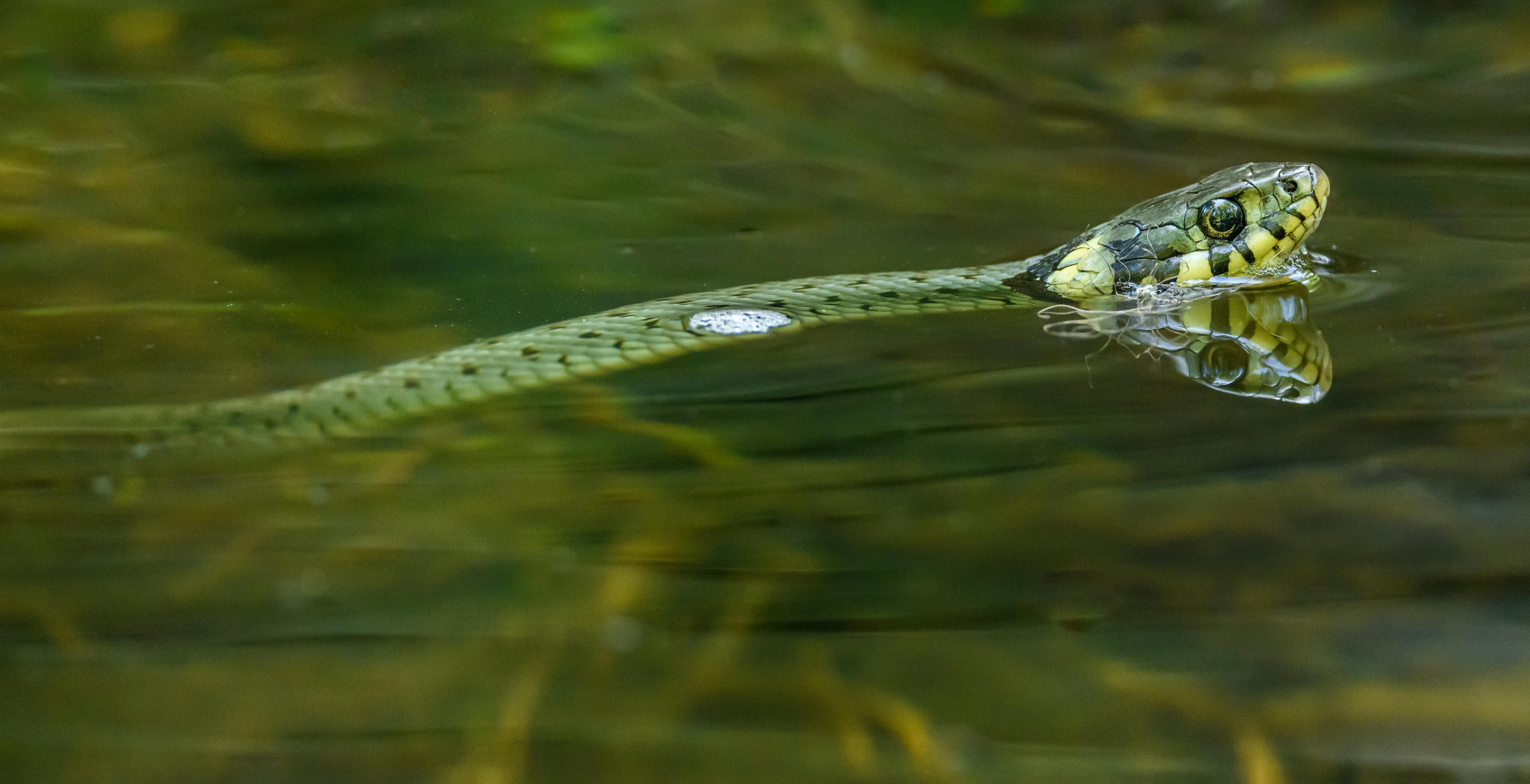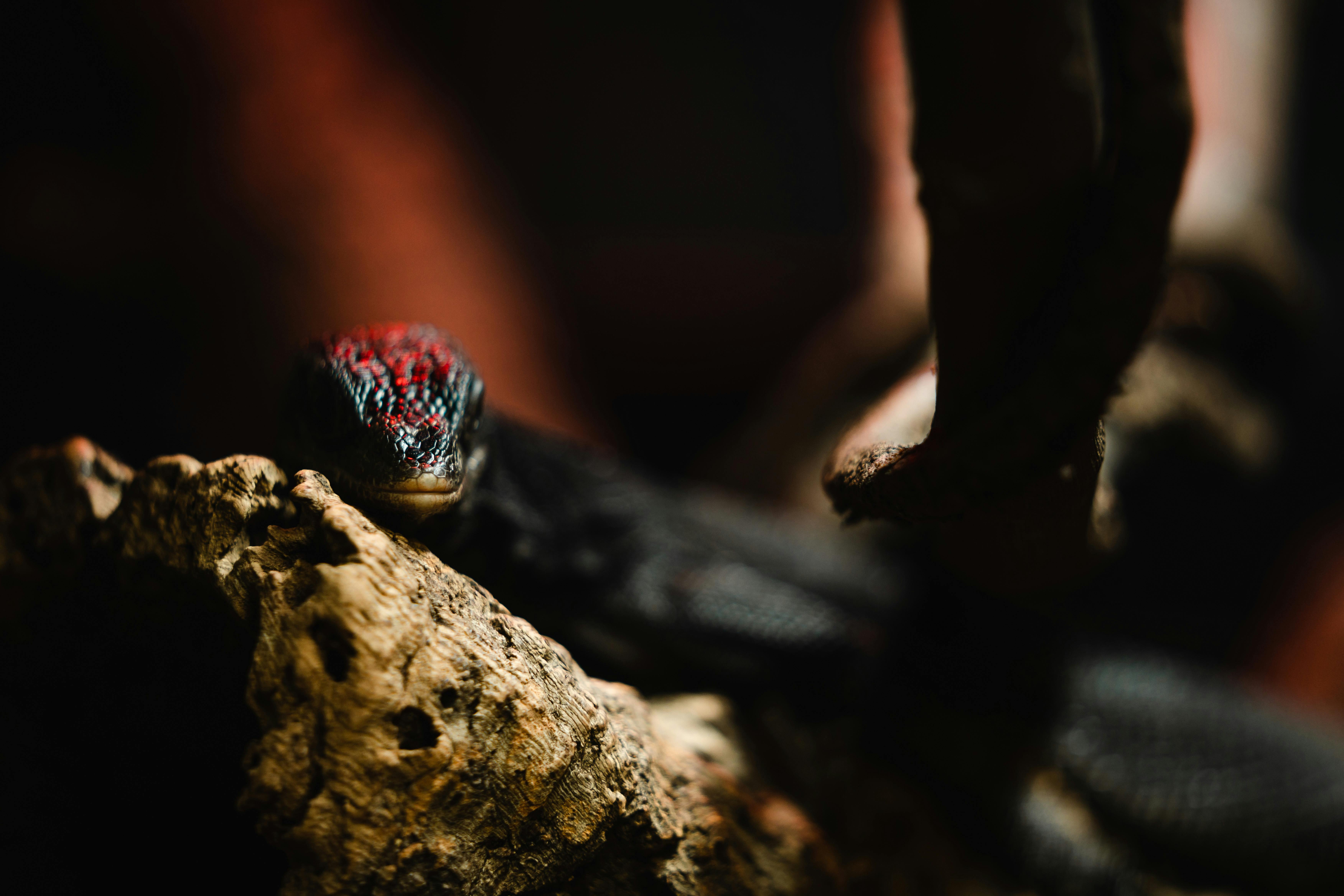Reptiles are fascinating creatures that often leave us in awe with their unique behaviors and adaptations. In this article, we will explore the basics of reptile behavior and gain a deeper understanding of their world. From their instinctual behaviors to their communication methods, prepare to embark on a journey into the captivating world of reptiles.

This image is the property of images.pexels.com.
I. Types of Reptiles
Reptiles are a diverse group of animals that can be categorized into various types based on their characteristics and features. The four main types of reptiles are lizards, snakes, turtles and tortoises, and crocodilians.
A. Lizards
Lizards are one of the most abundant and diverse groups of reptiles. They are characterized by their scaly skin, clawed feet, and ability to detach their tails as a defense mechanism. Lizards can be found in a wide range of habitats, from deserts to rainforests. They vary greatly in size, from small geckos to large monitor lizards.
B. Snakes
Snakes are elongated, legless reptiles that are known for their unique mode of locomotion. They move by slithering, using their muscular bodies to propel themselves forward. Snakes possess a wide array of adaptations, such as venomous fangs, heat-sensing pits, and specialized jaw structures for swallowing prey whole. They can be found in diverse habitats worldwide, except for extremely cold environments.
C. Turtles and Tortoises
Turtles and tortoises are reptiles known for their protective shells. Turtles are aquatic or semi-aquatic, with webbed feet for swimming. Tortoises, on the other hand, are land-dwelling and have columnar legs suitable for walking on land. Both turtles and tortoises have a bony shell that serves as their protective armor. They are generally herbivorous, although some species may also include animal matter in their diet.
D. Crocodilians
Crocodilians are a group of large, semi-aquatic reptiles that include crocodiles, alligators, and caimans. They possess a long snout, powerful jaws, and a muscular tail. Crocodilians are well-adapted for life in and around water, with webbed feet and a streamlined body. They are carnivorous and are known for their ambush-hunting techniques. Crocodilians can be found in tropical and subtropical regions across the globe.
II. Environmental Factors Influencing Reptile Behavior
Reptile behavior is strongly influenced by various environmental factors. Understanding these factors can provide insights into how reptiles adapt and survive in their respective habitats.
A. Temperature
Temperature plays a crucial role in reptile behavior. As ectothermic animals, reptiles rely on their environment to regulate their body temperature. Different reptile species have specific temperature requirements for optimal functioning. Some reptiles, like desert-dwelling lizards, bask under the sun to raise their body temperature, while others seek shady areas to cool down. Temperature also affects their metabolism, digestion, and overall activity levels.
B. Humidity
Humidity is another significant environmental factor that influences reptile behavior. Reptiles have varying moisture requirements, ranging from desert-dwelling species that can tolerate arid conditions to those that thrive in humid environments, such as rainforests. Higher humidity levels provide reptiles with ample hydration and can affect their respiratory functions. Changes in humidity can also impact their skin and shedding process.
C. Light and Photoperiod
Light and photoperiod, or the duration of sunlight and darkness in a given day, have profound effects on reptile behavior. Reptiles rely on natural light cues to regulate their daily activities, reproduction, and migration. Many reptiles, like turtles, use the moonlight to navigate during night-time activities and nesting. Artificial lighting can disrupt their natural behavioral patterns and may have adverse effects on their health.
D. Habitat Type
The specific habitat type greatly influences reptile behavior. Different reptile species are adapted to various habitats, such as deserts, forests, grasslands, or aquatic environments. Each habitat provides unique challenges and resources that shape reptile behavior. For example, reptiles that live in arid regions have evolved ways to conserve water and tolerate high temperatures, while those in aquatic habitats have adaptations for swimming and hunting underwater.
III. Reproduction and Courtship
Reptiles have diverse reproductive strategies and courtship behaviors that allow them to successfully reproduce and pass on their genes to the next generation.
A. Mating Behavior
Mating behavior in reptiles can vary greatly across different species. Some reptiles engage in elaborate courtship rituals, involving displays of color, body movements, and vocalizations. For example, male lizards may engage in head-nodding or push-up displays to attract females. In contrast, some reptiles, like snakes, may use a more secretive approach, relying on scent cues to locate potential mates.
B. Nesting and Incubation
After mating, female reptiles typically lay eggs in nests or burrows. The nesting process can vary depending on the species. Some reptiles, like sea turtles, have an instinct to return to the same nesting beach where they were born. The incubation period of reptile eggs varies widely, ranging from a few weeks to several months. Temperature plays a significant role in determining the sex of the hatchlings in many reptile species.
C. Parental Care
Reptiles generally exhibit limited parental care compared to mammals or birds. However, there are some exceptions. For instance, certain crocodilian species exhibit parental care by guarding the nest and even assisting hatchlings to reach water. Some lizard species also show maternal care, protecting the eggs until they hatch. However, in most reptiles, the young are left to fend for themselves once they emerge from the eggs.
IV. Feeding and Hunting Strategies
Reptiles have evolved various feeding and hunting strategies to meet their specific dietary needs and survive in their respective habitats.
A. Carnivorous Reptiles
Many reptiles are carnivorous, feeding on a diet consisting mainly of other animals. Snakes, for example, are skilled predators that use venom or constriction to immobilize their prey. Crocodilians also rely on their powerful jaws to capture and swallow prey. Carnivorous lizards, such as monitor lizards, have sharp teeth and strong jaws for hunting and consuming small mammals, birds, and other reptiles.
B. Herbivorous Reptiles
Some reptiles have evolved to be herbivorous, primarily feeding on plant matter. Turtles and tortoises are well-known herbivores, grazing on grasses, leaves, fruits, and other plant material. They have specialized jaws and teeth adaptations for cutting and grinding plant matter. Herbivorous lizards, such as iguanas, also consume a primarily plant-based diet, often feeding on leaves, flowers, and fruits.
C. Omnivorous Reptiles
Omnivorous reptiles have a more varied diet, consisting of both animal and plant matter. They have adapted to take advantage of the available food sources in their environments. Some omnivorous reptiles, like certain species of skinks and geckos, may feed on insects, fruits, nectar, and even carrion. These reptiles have specialized teeth and digestive systems that allow them to process a wide range of food items.
D. Ambush Predators
Certain reptiles, particularly snakes and crocodilians, are highly skilled ambush predators. They have adaptations for camouflage, allowing them to blend into their surroundings and remain hidden from potential prey. Ambush predators rely on stealth and patience, waiting for unsuspecting prey to come within striking distance before attacking. This hunting strategy minimizes energy expenditure and increases hunting success.
E. Active Predators
In contrast to ambush predators, some reptiles are active predators that actively pursue and capture their prey. Lizards, such as monitors and chameleons, are examples of active predators. They have well-developed senses, agile bodies, and keen eyesight that enable them to actively search and capture their prey. Active predators often exhibit faster bursts of speed and have more energy-demanding hunting strategies.

This image is the property of images.pexels.com.
V. Communication and Social Behavior
Reptiles utilize various forms of communication and engage in social interactions, although they may not exhibit complex social structures like mammals or birds.
A. Visual Displays
Many reptiles employ visual displays to communicate with conspecifics during courtship or territorial disputes. Bright colors, head-bobbing, push-ups, and dewlap extensions are just a few examples of visual displays observed in reptiles. These displays serve to attract mates, establish dominance, or signal aggression and territorial boundaries.
B. Vocalizations
Some reptiles, such as certain species of geckos and monitor lizards, are capable of vocalizations. These vocalizations range from hisses and growls to chirps and barks. Vocalizations serve as a means of communication between individuals, particularly during courtship or territorial interactions. Vocalizations can convey information about readiness to mate, alarm calls, or territorial boundaries.
C. Chemical Signals
Chemical signals play a significant role in reptile communication, especially in some snakes and lizards. Reptiles possess specialized sensory organs, such as Jacobson’s organ, that enable them to detect and interpret chemical cues in their environment. These chemical signals are used for a variety of purposes, including locating prey or potential mates, marking territorial boundaries, and recognizing conspecifics.
D. Territoriality
Territorial behavior is common among many reptiles, serving to establish and defend resources, such as food, mates, or nesting sites. Reptiles mark their territories using various methods, including scent marking, visual displays, or vocalizations. Territorial disputes may occur between conspecifics, often involving physical combat or displaying behaviors aimed at asserting dominance.
E. Social Interactions
While reptiles are generally not known for complex social structures, some species exhibit social behavior to varying degrees. Certain reptiles, such as certain snake and lizard species, may form aggregations or colonies for mating, communal nesting, or thermoregulation purposes. These social interactions can provide benefits such as increased protection from predators or sharing of resources.
VI. Thermoregulation and Basking
Reptiles rely on external sources of heat to regulate their body temperature, a process known as thermoregulation. Basking behavior, which involves exposing their bodies to sunlight or other heat sources, plays a crucial role in maintaining their optimal body temperature.
A. Thermal Preferences and Tolerance
Different reptile species have specific thermal preferences and tolerance ranges. They seek out specific temperature ranges that optimize their physiological functions. Reptiles have varying degrees of tolerance to high or low temperatures, depending on their adaptations and habitat. Desert-dwelling reptiles may have higher heat tolerance, while alpine reptiles may have adaptations for surviving in colder temperatures.
B. Basking Behavior
Basking behavior is a common thermoregulatory strategy employed by reptiles. They use external heat sources, such as the sun or heated rocks, to raise their body temperature. Basking allows reptiles to increase their metabolism, digestion, and overall activity levels. By adjusting their basking behavior, reptiles can effectively regulate their body temperature and energy expenditure.
C. Importance of Thermoregulation
Thermoregulation is critical for reptiles as it affects their physiological processes, metabolism, enzyme activity, immune response, and overall fitness. Failure to achieve appropriate body temperatures can negatively impact reptiles’ health, reproductive success, and overall survival. Extreme temperatures, especially those beyond their tolerance ranges, can lead to thermal stress, dehydration, or even death.

This image is the property of images.pexels.com.
VII. Defensive Mechanisms
Reptiles have evolved various defensive mechanisms to protect themselves from predators or perceived threats. These mechanisms can be adaptations that allow them to escape, deter, or intimidate potential attackers.
A. Camouflage and Coloration
Many reptiles have developed camouflage adaptations that allow them to blend into their surroundings, making them less visible to predators or prey. They may possess cryptic coloration, patterns, or skin textures that match their habitat, such as leaf-like patterns in certain geckos or mottled brown coloration seen in snakes. Camouflage helps these reptiles remain undetected or confuse potential predators.
B. Tail Autotomy
Tail autotomy is the ability of certain reptiles to voluntarily detach their tails as a defensive mechanism. When threatened, the reptile can shed its tail, which continues to wiggle and distract the predator, allowing the reptile to escape. The tail usually regenerates over time, although the replacement may differ in appearance or functionality compared to the original.
C. Venomous Snakes and Their Behavior
Venomous snakes possess specialized adaptations that allow them to inject venom into their prey or potential threats. These snakes have venom glands and hollow or grooved fangs used to deliver the venom. Venom can immobilize or kill prey, as well as deter predators. Venomous snakes typically exhibit specific defensive behaviors, such as warning displays, hooding, or rattling their tail, to signal their venomous nature and discourage potential threats.
D. Intimidating Displays
Some reptiles resort to intimidating displays to deter predators or rivals. For instance, certain lizards may puff up their bodies, expand throat pouches, or frill the skin around their neck to appear larger and more intimidating. Similar behavior can be observed in some snakes, where they may hiss, strike, or flatten their body in an attempt to appear larger or more dangerous.
VIII. Hibernation and Estivation
Hibernation and estivation are two survival strategies employed by reptiles to cope with unfavorable environmental conditions, such as extreme cold or drought.
A. Hibernation
Hibernation is a period of inactivity and lowered metabolic rate that certain reptiles enter during cold winter months or other unfavorable conditions. Reptiles that hibernate slow down their bodily functions and seek refuge in sheltered locations, such as burrows or crevices, to conserve energy. Hibernation helps them survive through periods of food scarcity, low temperatures, or other unfavorable conditions.
B. Estivation
Estivation is similar to hibernation but occurs during periods of extreme heat or drought. Reptiles that experience prolonged periods of hot and dry conditions may go into a state of estivation. During estivation, reptiles reduce their metabolic rate and activity levels, seeking out cool and humid microhabitats to conserve water. Estivation allows them to wait out the dry season until conditions become more favorable.
IX. Daily Activity Patterns
Reptiles exhibit various activity patterns throughout the day, which can be categorized into three main types: nocturnal, diurnal, and crepuscular.
A. Nocturnal Reptiles
Nocturnal reptiles are most active during the night. They have adapted to low-light conditions, possessing specialized adaptations, such as larger eyes, heightened senses, and light-sensitive structures, to navigate and hunt in darkness. Nocturnal reptiles occupy ecological niches that are less competitive during the night, avoiding competition with diurnal species.
B. Diurnal Reptiles
Diurnal reptiles are most active during the daytime. They rely on sunlight for thermoregulation, hunting, and other daily activities. Diurnal reptiles often exhibit basking behavior in the morning to raise their body temperature and become more active during peak daylight hours. They may have adaptations for capturing prey that are also active during the day, such as birds or insects.
C. Crepuscular Reptiles
Crepuscular reptiles are most active during dawn and dusk, which are the transitional periods between day and night. These reptiles take advantage of low-light conditions when temperatures are optimal and avoid the intense heat of midday or the darkness of the night. Crepuscular reptiles may exhibit basking behavior during these transitional periods to warm up or cool down before or after their active periods.
X. Lifespan and Aging
Reptiles exhibit a wide range of lifespans, influenced by factors such as their species, size, habitat, and overall health.
A. Longevity in Reptiles
Some reptiles have relatively long lifespans compared to other animals. Tortoises, for example, are known for their exceptional longevity, with some individuals living for over a century. Other reptiles, such as large crocodilians, may also have extended lifespans. Factors influencing longevity in reptiles include genetic factors, environmental conditions, predation, disease, and overall stress levels.
B. Factors Affecting Lifespan
Several factors can influence the lifespan of reptiles. Environmental factors, such as temperature, humidity, and habitat quality, can impact their overall health and survival. Diet and nutrition also play a crucial role in determining lifespan, with well-balanced diets contributing to better health and longevity. Genetic factors and the individual’s ability to avoid predation and disease also affect lifespan to varying degrees.
C. Aging Process in Reptiles
Reptiles, like other animals, undergo an aging process as they grow older. The aging process in reptiles is characterized by various physiological changes, such as reduced reproductive capacity, decreased growth rate, and changes in organ function. The rate at which these changes occur can vary among species and individuals. Factors such as diet, stress levels, and environmental conditions can influence the aging process in reptiles.
Reptiles exhibit fascinating behaviors and adaptations that allow them to thrive in diverse habitats. By understanding the various aspects of reptile behavior, we gain valuable insights into their world and the intricacies of their interaction with the environment. From thermoregulation and hunting strategies to communication and reproductive behaviors, reptiles truly showcase the remarkable diversity within the animal kingdom.

